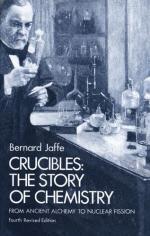|
This section contains 1,105 words (approx. 4 pages at 300 words per page) |

|
The first splitting of an atom by John Douglas Cockroft and Ernest Thomas Sinton Walton in 1932 was a momentous occasion in physics. The two researchers found that the two helium atoms produced when a proton collides with a lithium nucleus have more than fifty times the kinetic energy of the protons used to initiate the reaction. The question these results posed for physicists was whether similar reactions could be used as a practical source of energy. Further research indicated that other reactions could be designed in which the energy produced was many times greater than the energy used to bring about the reaction initially.
The hopes for finding practical applications of such reactions were dashed, however, when studies showed that only one to ten particles out of a billion actually come into contact with a target nucleus. The total energy needed to initiate such reactions, therefore...
|
This section contains 1,105 words (approx. 4 pages at 300 words per page) |

|


